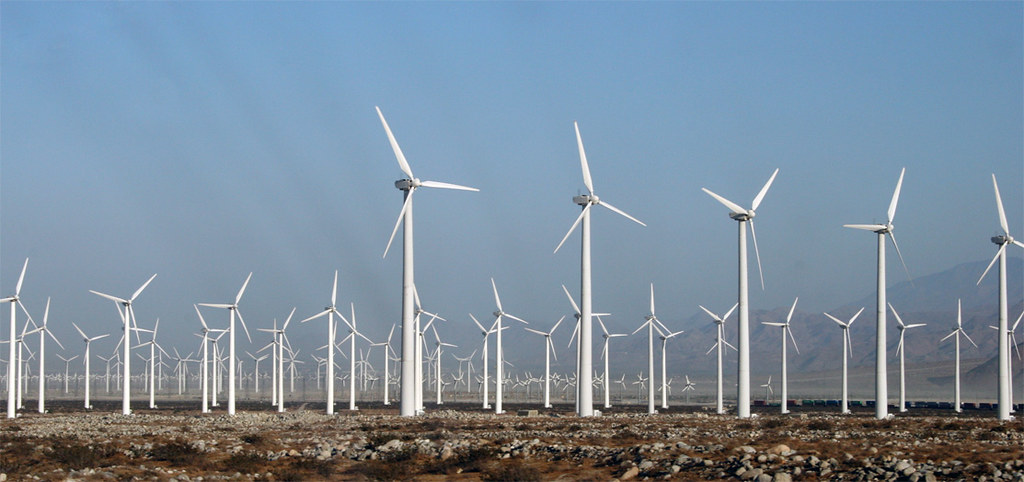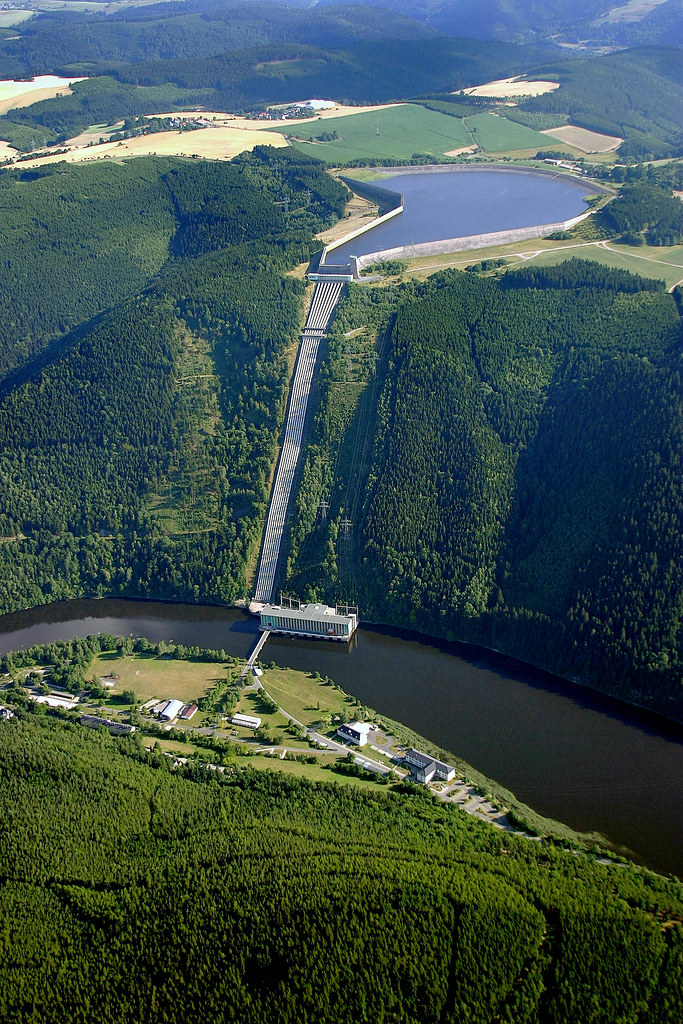With more variable generation resources, wind and solar, on the system, the need for more variable load will also increase. It is all about balancing supply and demand. It has been the case since the start of the electric grids. So far, the balancing has largely been achieved by making generation flexible and respond to load. Going forward, this paradigm will need to change by also making the load flexible.

“Wind generators” by BiggerPictureImages.com is licensed under CC BY-NC-ND 2.0
The load has always been variable during the day and during the seasons. By and large, these variations have been predictable. Since for a long time the dominant sources of generation were hydroelectric power and coal thermal power, the supply side was flexible and could respond to the diurnal and the seasonal changes of the load. The coal thermal plants can load follow within a range. Hydroelectric power is highly flexible. It can be ramped up and down quickly. In addition, start-up time of a hydro turbines is in a couple of minutes.
For over half a century this paradigm worked well, but two developments made balancing of supply and demand much more challenging in the 1960s/1970s. On the load side the economic boom after the World War II accelerated the growth of electric consumption. Between 1964 and 1976 the US electricity generation doubled. What more, the load profile also changed. Not least due to air-conditioning the load got higher and more pronounced peaks. On the supply side, power generation, there was also profound changes. Nuclear power took off in the 1970s. Economy of scale drove larger and larger, over 1000 MW, size of the power plants, both for nuclear as well as for coal thermal power units.
The large coal power plants had limited flexibility and the nuclear power plants had basically no flexibility. For economic reasons both types pf power plants needed to run as much as possible. They became the “baseload power generation”. However, in most parts of the nation the more accentuated peak power demands required more flexibility than available from the existing hydroelectric generation.
To solve the problem two technologies were adopted, pumped hydro storage and gas turbine “peakers”. The concept for pumped hydro is straightforward, I e when demand is low, water from a lower reservoir is pumped to a higher elevation reservoir. When the demand is high the water is released through hydro turbines. The first pumped storage was built already 1907 in Shaffhausen, Switzerland. It used separate pumps. A big step forward of the technology was the development of reversible hydro turbines in the 1930s, eliminating the need for separate pumps. Today, state-of-the-art pumped storage today uses variable speed drives, making it even more flexible.

“Hohenwarte II Pumped-storage Power Plant” by Vattenfall. Picture is licensed under CC BY-NC-ND 2.0
The largest pumped hydro storage in the world is Bath County Pumped Storage Station in Virginia. The capacity is 3003 MW. Preliminary permits were received in 1971. Construction started 1977 and it started to generate electricity in 1985, and later expanded to its present size. By 2017 the total amount of pumped hydro storage in the U.S. is 22.6 GW, which is about 2% of the nation’s power generation capacity.
Nevertheless, aeroderivative gas turbines became the main technology to provide “peak power”. One of the first installation 1962 was by Hartford Electric Light Co. in Connecticut. It used a Pratt&Whitney (P&W) J57 aviation gas turbine and delivered 10 MW. The big step forward came the following year with the first installation of the P&W FT4A gas turbine, rated 15 MW. It was a dedicated design for marine and industrial power plants, based on the J75/JT4 turbojet engine. More aeroderivative designs followed ranging from 30 MW to 140 MW. Over 1000 peaker gas turbines have been installed in the U.S.
Using these technologies, pumped hydro and peaker gas turbines, the focus in the 1960s and the 1970s was to provide peak power and “black-start” capabilities in case of blackouts. It was not until the late 1970s attention started to come to the load side. If demand peaks could be “shaved” and demand reduced in situations of shortage of generation, it could be a more efficient way to solve the balancing problem.
One of the very first demand response (DR) pilot projects was 1977-1978 in a partnership between Department of Energy (DOE), Bonneville Power Administration (BPA) and City of Port Angeles, Washington. 1985 BPA and City Light & Power, the municipal electric utility of City of Milton-Freewater, Oregon, launched a highly successful DR program. The City Light and Power managed a fleet of water heaters in local homes, cycling them on and off through a voltage signal to shave peak power demand and lessen costs. In the 1990s BPA also made several DR pilots with its public power customers for “non-wire solutions, e g reducing winter peaks in order defer or avoid construction of new transmission infrastructure. In the 10-year period between 1995 and 2005 DR was further developed by BPA and many other electric utilities, for example with interruptible tariffs and other programs for large industrial customers.
From mid 2000s aggregators like EnerNOC (now Enel X), Comverge (now Itron) and CPower (now LS Power), enabled small industrial and commercial customers, to participate with DR in wholesale electricity markets. FERC Order 745 in 2011 gave DR a big boost. The Order said that DR providers must be compensated for reducing electricity load at the same rates if they met that demand with generation. The Order was challenged that DR got overly compensated without being required to be available in the same way as generation. However, in 2016 the Supreme Court upheld Order 745.
The amounts of DR in wholesale markets are significant. For example, in PJM close to 10,000 MW of DR has cleared in the capacity markets. In addition, DR can participate in price-based response in PJM energy markets, as well as in PJM ancillary service markets like synchronized reserve fast response. Also, residential customers can participate with DR in wholesale markets thanks to innovative companies like OhmConnect have shown in California.
FERC Order 2222 this year (2020) took a step further to enable Distributed Energy Resources (DER) to participate in wholesale markets. DER has grown substantially in the last decade and is expected to continue to grow substantially. These “behind the meter” resources include for example rooftop solar, battery storage, microturbines, fuel cells, and natural gas-powered reciprocating engines. DER resources can be aggregated in virtual power plants as well as integrated into microgrids. The microgrids can operate connected to the grid but can also disconnect from the grid and operate in “island mode”.
To really unleash the full potential of DR and DER to enable more flexible load, developing the distribution level/retail side will be crucial. While a lot has been done by load serving entities, as mentioned above, opening the retail markets through independent distribution system operators (DSO) will take it further. Consumers and prosumers will respond to dynamic prices. The response can be automated with various degrees of sophistication.
The opportunities are many and growing. Electric vehicles (EVs) are currently forecasted to reach over 18 million by 2030. Assuming on average a 50-kWh battery, it adds up to a storage resource of 900 GWh! The best opportunity to use this resource will probably be as DR with “smart charging” of the vehicles (V1G), but also as a DER resource delivering energy and/or ancillary services to the grid (V2G). Additional small industrial, commercial, and residential opportunities are rooftop solar, customer battery systems, smart thermostats, smart appliances, etc.
There are many challenges as well. Maybe the biggest challenge will be to control the grid with data streams of controllable devices in the hundreds of millions, potentially in the billions. In comparison the traditional “top-down” control for transmission grids deal with 1000/10,000 points of control. As advocated by Lorenzo Kristov and others a layered hierarchical control structure will reduce complexity, allow scalability, and increase resilience and security. Within the distribution system a “bottom-up” approach seems more optimal. A promising concept of “autonomous energy grids” for distribution grids has been developed by NREL (National Renewable Energy Laboratory).
Achieving a future reliable, resilient, and cost-efficient electric system with an exceedingly high penetration, 50-70% and more, of variable renewables, wind and solar, will require “all of the above resources” – flexible and fast responding generation, robust transmission, bulk energy storage, DR, and DER. All factors will matter but making the load flexible may ultimately be the single most decisive factor for success.